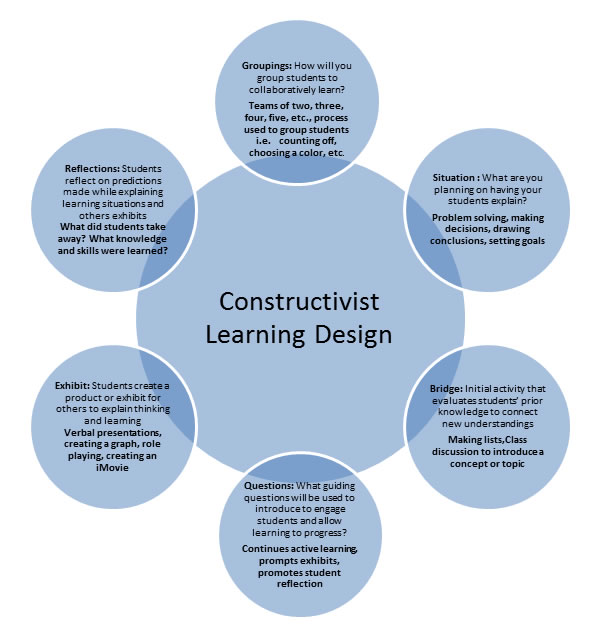Constructivist Learning Design and the 21st Century Student
Moersch (1998) identifies Constructivism as, ”…a philosophical view on how we come to know and learn…” It can be summarized using three fundamental propositions:
- Understanding is in our interactions with the environment.
- Cognitive conflict or puzzlement is the stimulus for learning and determines the organization and nature of what is learned.
- Knowledge evolves through social negotiation and through the evaluation of the viability of individual understandings (Savery & Duffy, 1995).
Taking a constructivist approach within instruction will equip students with the knowledge to succeed not only in college, but within their professions. Furthermore, the skills that students attain through constructive learning will enable them to apply knowledge in real, authentic situations and experiences. As a result, learning will become contextualized and more meaningful to each individual.
Gagnon and Collay (2006) identify a Constructivist Learning Design framework that outlines six components for student learning and academic success.
Application of the Constructivist Learning Design is rooted in engagement as students collaboratively work to research, discover, and draw conclusions about problems or issues in authentic situations. Teachers set the stage for learning. Students are responsible for unearthing answers, questioning, and drawing conclusions about a topic or concept. In the Constructivist approach, teachers are consistently encouraging and supporting students as they learn, but students remain autonomous in the process (Gagnon & Collay, 2006).

